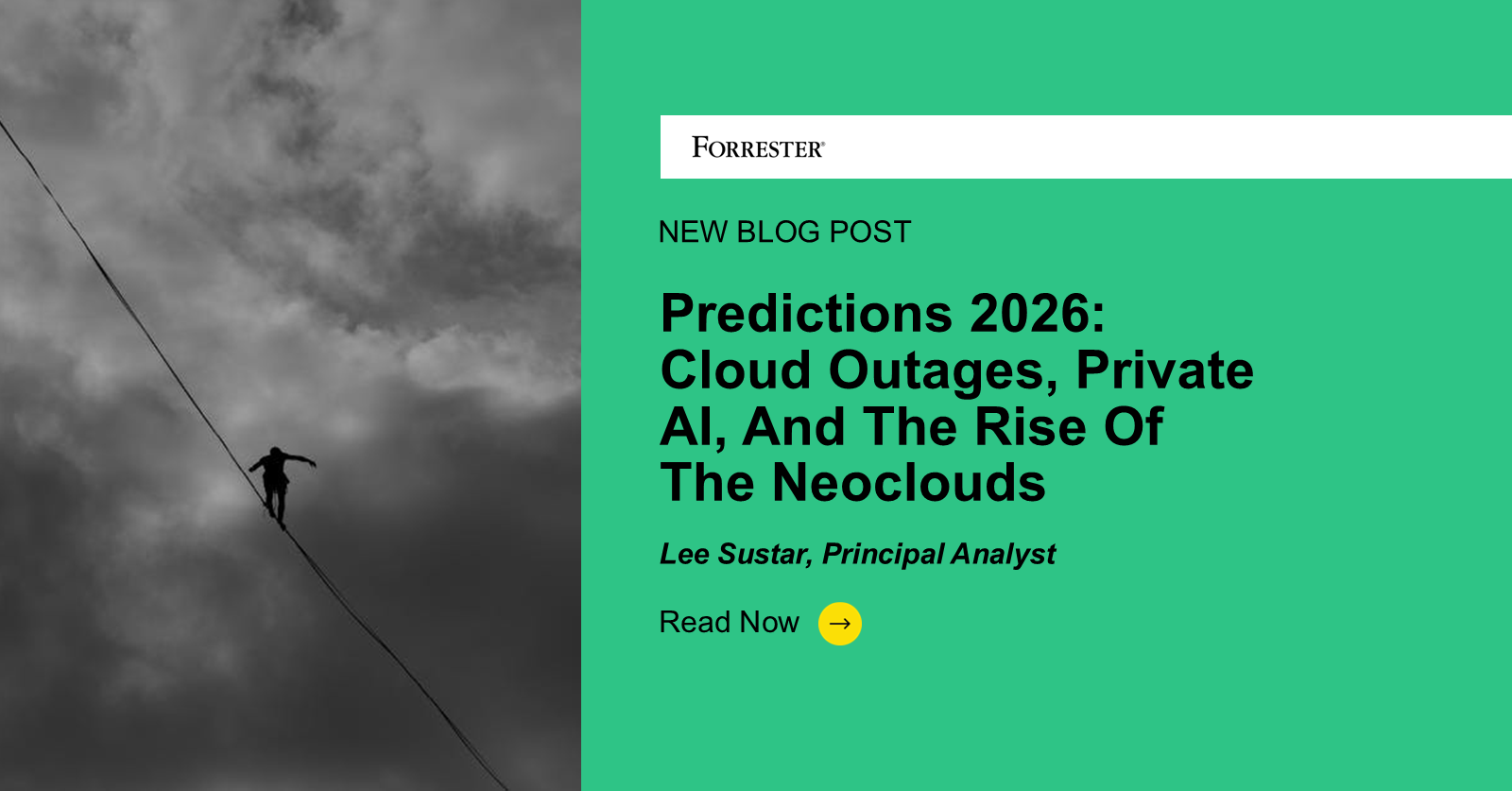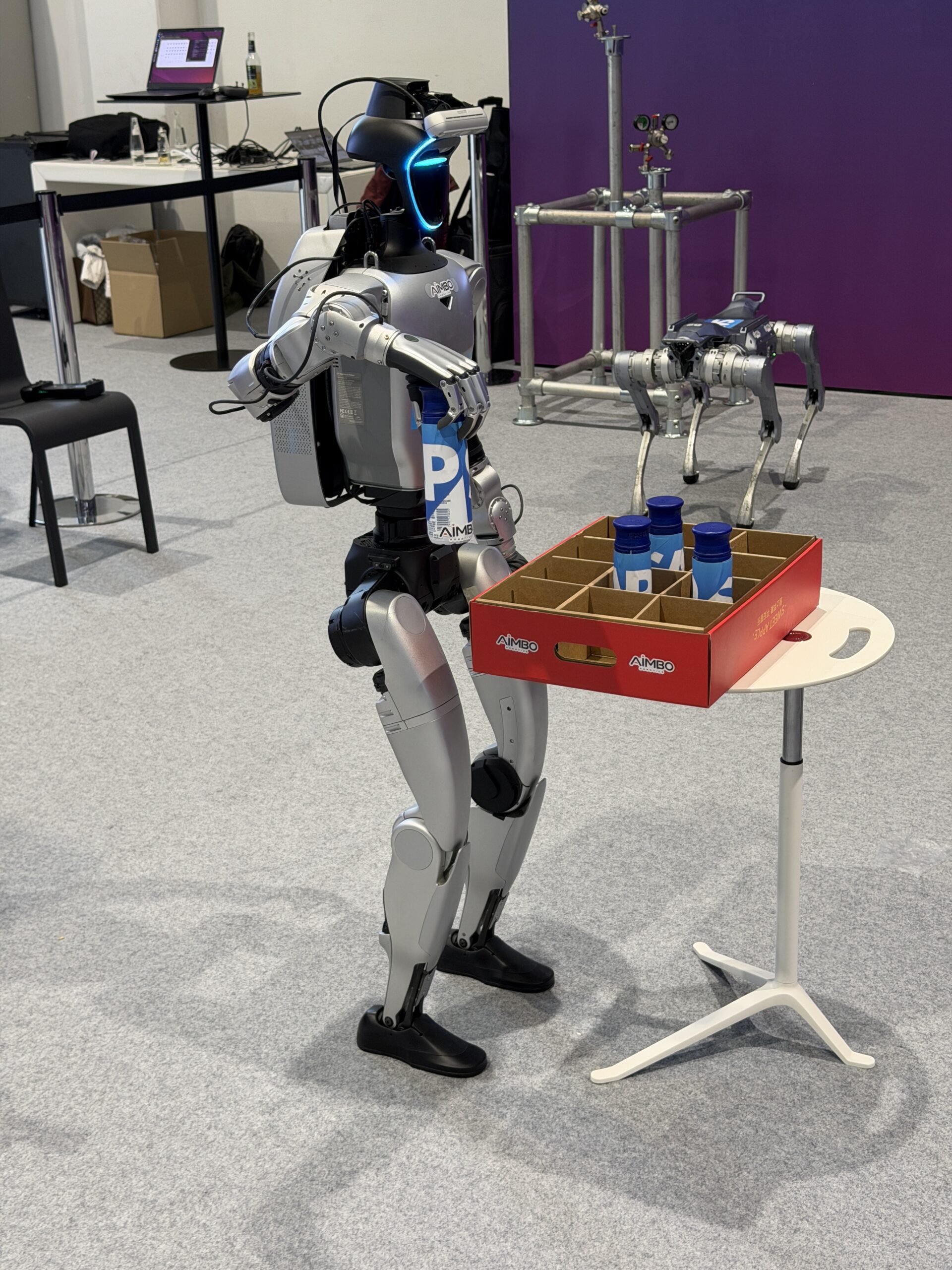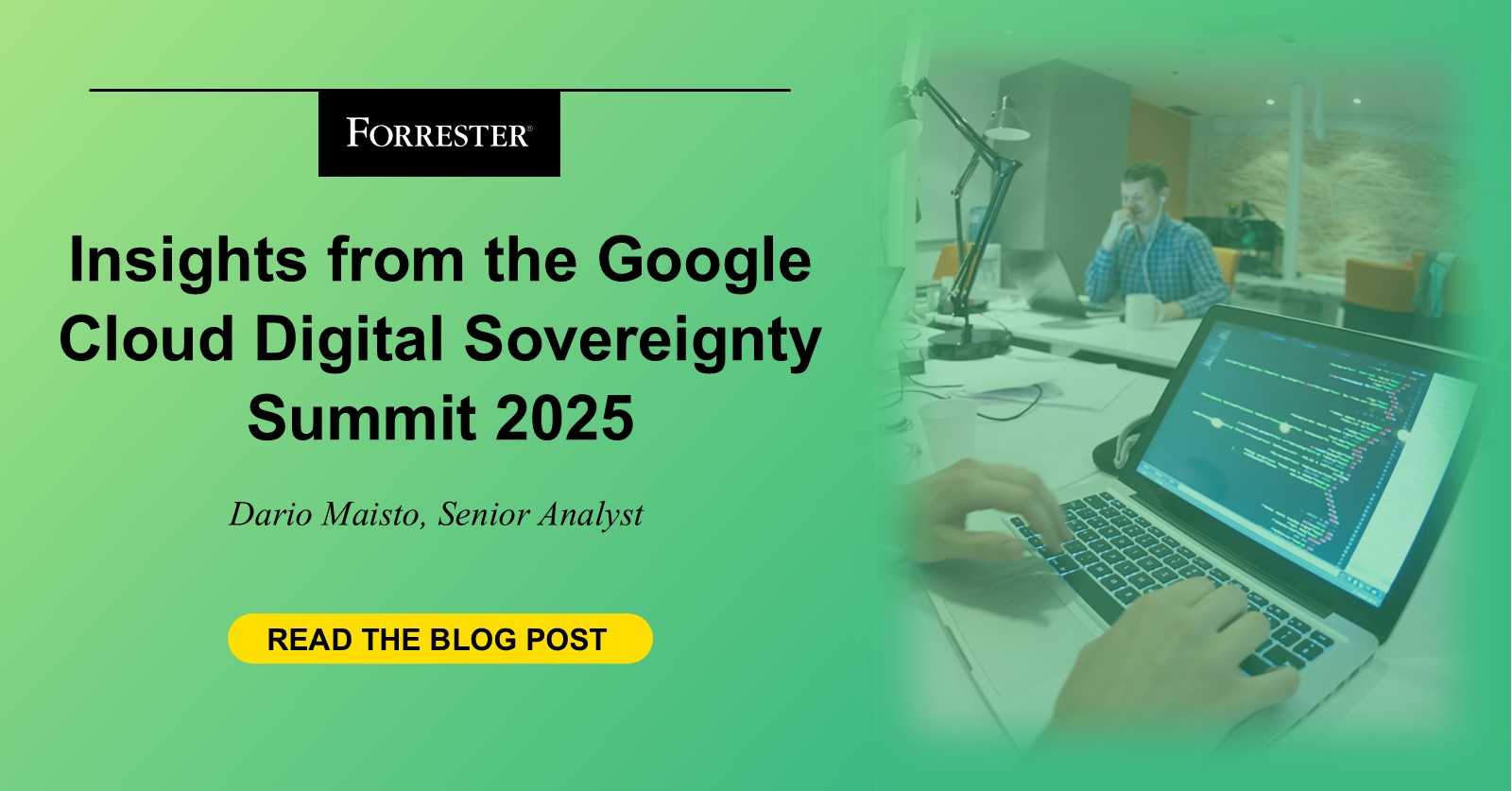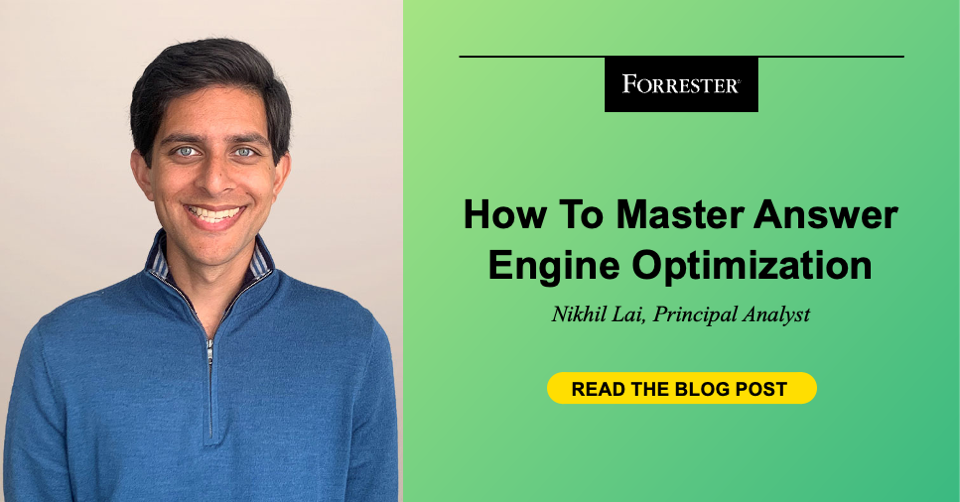Every year, Forrester publishes its Predictions series to project what the year ahead will bring. In Predictions 2026: Cloud Computing, our predictions center around two major races: the hyperscaler race to build AI-native cloud infrastructure and, similarly, the enterprise race to craft meaningful AI strategies. We expect some turmoil ahead.
AI data center upgrades will trigger two major multiday cloud outages. The cloud’s promise of always-on infrastructure took a hit in 2025, as AWS and Azure suffered high-profile outages that disrupted critical services across industries and regions. These incidents weren’t isolated — they’re a preview of what’s to come. Hyperscalers are diverting investment away from legacy x86 and ARM environments, prioritizing GPU-centric data centers for AI workloads while aging infrastructure falters under growing complexity. We believe this strategy will have some meaningful fallout in the form of at least two major multiday outages in 2026. Customers will push back, too: The complexity and dependencies that hampered recovery from the AWS and Azure cloud outages will compel customers to address operational risks in cloud beyond the immediate concerns over cloud AI service adoption. Big cloud customers will start to exert pressure on cloud providers to renovate their infrastructure to mitigate operational risk.
At least 15% of enterprises will seek private AI atop private clouds to counter cloud grabs for corporate data. These outages will force enterprises to rethink their cloud strategies — not just for resilience but for control, especially for their big bets on AI. In response to rising AI costs, data lock-in, and operational risk, at least 15% of enterprises will shift toward private AI deployments built atop private clouds in 2026. There are several drivers for this, from cost to Salesforce’s move to shut down third-party access to the Slack API, depriving Slack customers the ability to leverage Slack data for creation of agents for workflow optimization on platforms other than Salesforce itself.
Neoclouds will grab $20 billion in revenue, eroding hyperscaler dominance in genAI. While hyperscalers grapple with outages and scrutiny, neoclouds such as CoreWeave, Lambda, and Nebius are angling to capture surging demand for AI. Backed by NVIDIA and venture capital, neoclouds are expanding globally and integrating open source models, orchestration tools, and sovereign AI capabilities. These GPU-first providers are expected to capture $20 billion in revenue in 2026, with some offering scalable, high-performance AI infrastructure tailored to enterprise needs while others act as GPU wholesalers in niche — but highly profitable — markets. We will see tripled growth in enterprise neocloud deployments as well as regional expansions across Europe and Asia, plus deeper integration into enterprise AI stacks — forcing hyperscalers to rethink their strategies.
Cloud computing in 2026 will be shaped by infrastructure fragility, enterprise autonomy via private cloud, and AI-native innovation from neoclouds and hyperscalers alike. As outages expose the limits of legacy cloud, the AI-native cloud will bring both new capabilities and even greater complexity.
Forrester clients can explore these and other predictions in full and discuss them with our analysts at [email protected].
























